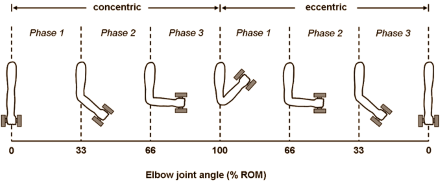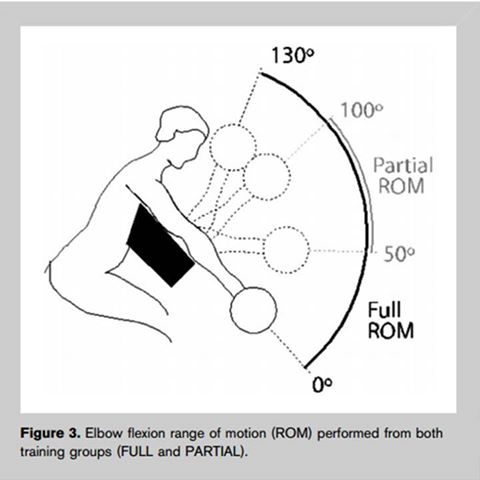By Paul Magnus
A full range of motion exercise is performing a movement through full contraction and extension stopping just short of the limits to ensure resistance and control remain on the muscle at all times.
Studies have shown that performing full range of motion exercises leads to better strength gains and more effective muscle hypertrophy, as well as decreased fat stores. Training through the full range of motion places positive stress on the connective tissue and decreases the chance of injury. It will also increase your efficiency of motion. If you only train one part of the whole range of motion, you can only expect your muscles to work efficiently when they are in that specific range. Flexibility can also be decreased if you only train in a short range.

The primary stimulus for muscle growth is tension. Ideally, tension should be long in duration and be high throughout the full range of motion. Unfortunately, very few exercises maintain high tension on a muscle throughout its entire range of motion. Most exercises have a strength curve. The strength curve of a muscle represents the amount of force you can produce over the range of motion. The strength curve of a muscle falls into three basic categories.
Ascending strength curve: This is when a movement becomes easier through the range of motion until the end of the full contraction, such as bench press, squat, deadlifts.
Descending strength curve: This is when a movement becomes progressively harder through the range of motion, such as pull ups or rows.
Bell shaped strength curve: This is when a movement becomes harder and then easier, such as arm curls.

Generally speaking, you are strongest in the middle range of a movement and weakest at the extremes, as well as slightly weaker in the shortened muscle position and slightly stronger in the lengthened muscle position.
When designing your workout program, choose exercises that optimally stimulate a muscle through all the points of the strength curve. Preferably starting in the shortened position and progressing through the workout to the lengthened position.
For example, when training biceps, start with high cable curls which would work the shortened range of the bicep. Then progress into barbell curls for example, which will work the mid-range of the bicep. And finally finish with incline bench curls which will work the bicep in the long range or stretched position.

I really like the idea of videos to help get a good feel to how to do it correctly 🙂
LikeLiked by 1 person
Great. I’m glad they are helping you achieve your goals 🙂
LikeLike